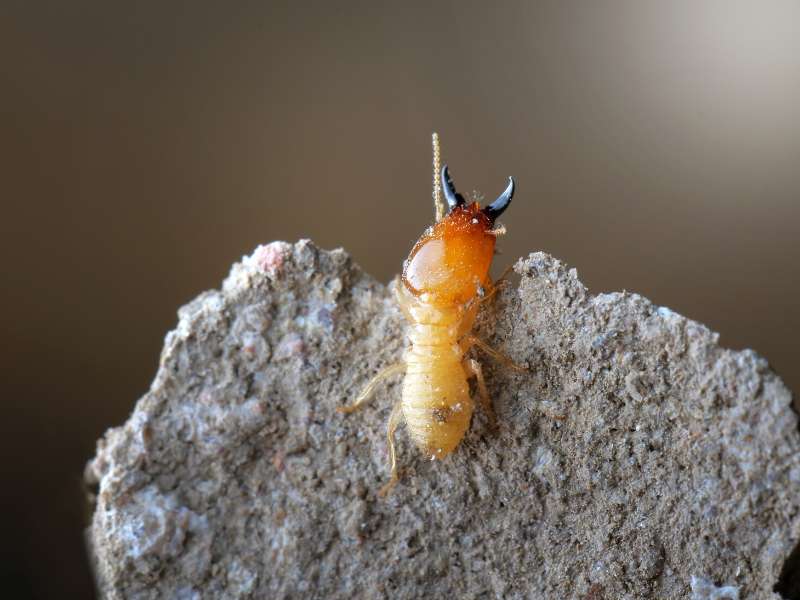Termite infestation in your home? You’re not alone. These wood-destroying insects are responsible for lots of structural instability and damages that cost homeowners billions of dollars every year.
The good news is that you termite infestations in your home are preventable. The key to controlling termites is learning as much as you can about them. This includes the type of species, signs of infestation, and ways of managing a colony.
In this article, you’ll find important information on how to identify and treat an infestation.
Termite Infestations in Your Home • The Facts You Need to Know

Termites: Are They Really a Threat?
Termites are at the center of nature’s critical role in recycling decaying wood. However, they can’t differentiate dead trees and structural timber, so they often end up being more destructive than useful.
Termite infestations can cause major structural damage, which can lead to significant safety hazards. For example, termites may chew through electrical wires which could cause a fire in the home.
What’s worse is that standard household insurance usually doesn’t cover termite damage. The type of destruction these little critters can cause to your home could cause hundreds to thousands of dollars in repairs since they can eat their way into the ceiling, basement, and through your foundation floor. Yes, white ants can be a big problem. They can potentially put your house and structure at stake if you don’t take care of them.
Apart from wood, termites also destroy plaster, insulation, and metal siding. So, regardless of what a house is made of, everyone is at risk of termite infestation. But the earlier you notice an infestation, the better your chances are to reverse any damage they may have caused.
Are Termites Dangerous to Humans?
Termites don’t pose any health risks to humans. While they can sting, they don’t cause or transmit any diseases. However, these insects are a significant threat to structures. Failure to control their infestation could cost you your home or business premise.
How to Identify an Infestation
Because termites do most of their destructive work inside your walls, it’s often difficult to notice an infestation until it’s too late and the damage is severe. While frequent inspection is crucial, you should also be on the lookout for the following signs of infestation:
Sign #1: Swarming
Swarming is most common during the spring. Because of the gradual increase in temperature during this season, the termites swarm in search of new colonies. Swarmer termites are not dangerous to either humans or wood, but they are a vital indicator of the presence of termites.
On the other hand, other types of termite species swarm during the winter. The swarming can occur indoors or outside either early in the morning or in the evening.
Sign #2: Discarded Wings
When swarming, mature swarmers are more likely to shed off their wings. You’ll find them carried around by the wind, some trapped around the holes where swarming occurred, spider webs, and others lying around on the surfaces like window sills.
The presence of termite wings is a crucial indicator of a possible infestation. Be sure to take the necessary steps to treat the infestation as soon as you notice them.
Sign #3: Mud Tubes
Termites, just like other insects, make their nests where most of their activities take place. Termites make small size mud nests that resemble a pencil and hang upside down from the ceiling. The shape, size, and the mud used is responsible for maintaining a temperature they can survive on while inside.
Termites like making their nests near the source of food which means you’re most likely to find them next to wood structures, inside wooden cabinets, or under your home’s foundation, like the basement.
Sign #4: Frass
Frass droppings are a common indicator of dry wood termites. As this species feeds on wood, they discard droppings called frass. Frass is the combination of feces and saliva from chewing on wooden material.
Sign #5: Clicking Sounds
In a typical termite territory, there are soldier termites whose work is to protect the colony and warn other termites of any possible danger.
Bigger heads and larger jaws characterize the soldier termites. When they notice any danger, the soldier termites hit their heads against the wood to signal the other termites, causing a notable clicking sound.
How to Treat Termites
Severe termite infestation can be a pain, and it’s challenging to repair the damages without spending upwards of a thousand dollars—so ignoring an infestation would be digging your own grave. Consequently, it would be unwise to start repairing the damage before you’re sure the termites are under control.
Method #1: Non-Chemical Treatments
One of the most popular ways to treat termites is with non-chemical treatment methods, like putting up physical barriers during construction. For example, setting up steel mesh and different-sized mesh linings along your house can help control termites. This type of project calls for a professional who can help with the construction of your home.
Method #2: Chemical Treatments
You can also opt for chemical treatments such as the use of insecticides. However, these can cause harm to the environment and people if you don’t follow proper laid down measures. Be sure to call in a pest control expert like Greenhow for help on choosing the safest types of treatments for your family.
Method #3: Termite Baits
The rising concerns for the impacts of pesticides on human health and the environment have seen the introduction of baits. Their ingredients contain slow-acting insecticides which help eliminate the existing termite colony.
Takeaways
Termites can be such a pain to homeowners. Although small, these creatures can cause unimaginable damage when gone unnoticed.
Recognizing the symptoms, coupled up with frequent monitoring of your building, will help avoid and contain infestations early. And if you do notice an infestation, then be sure to call a pest control expert for help immediately to avoid further damage.
Images Courtesy of Canva.
10 Signs that You Have a Leaking Basement in Your Home
5 Home Improvement and Remodeling Ideas to Boost Your Home Value





